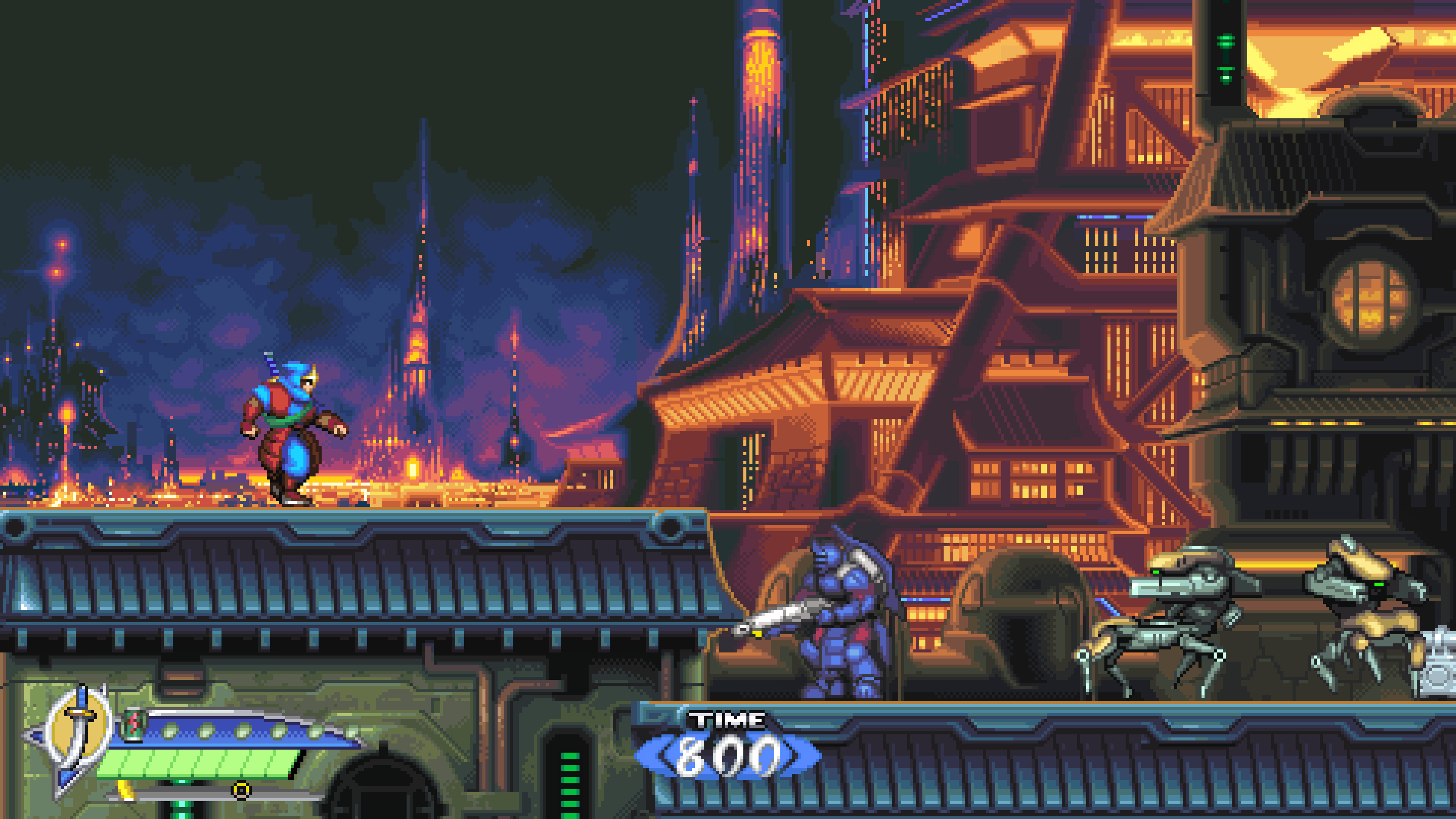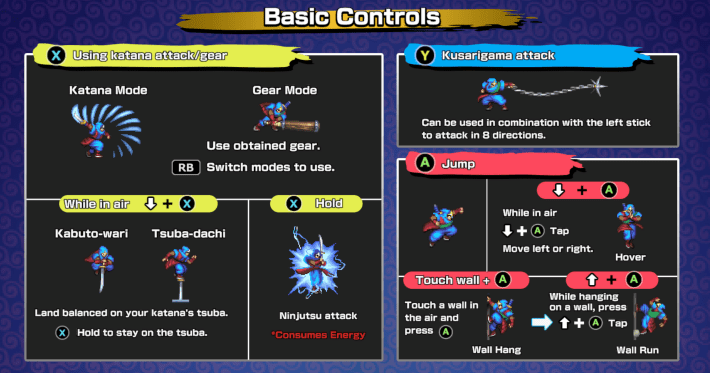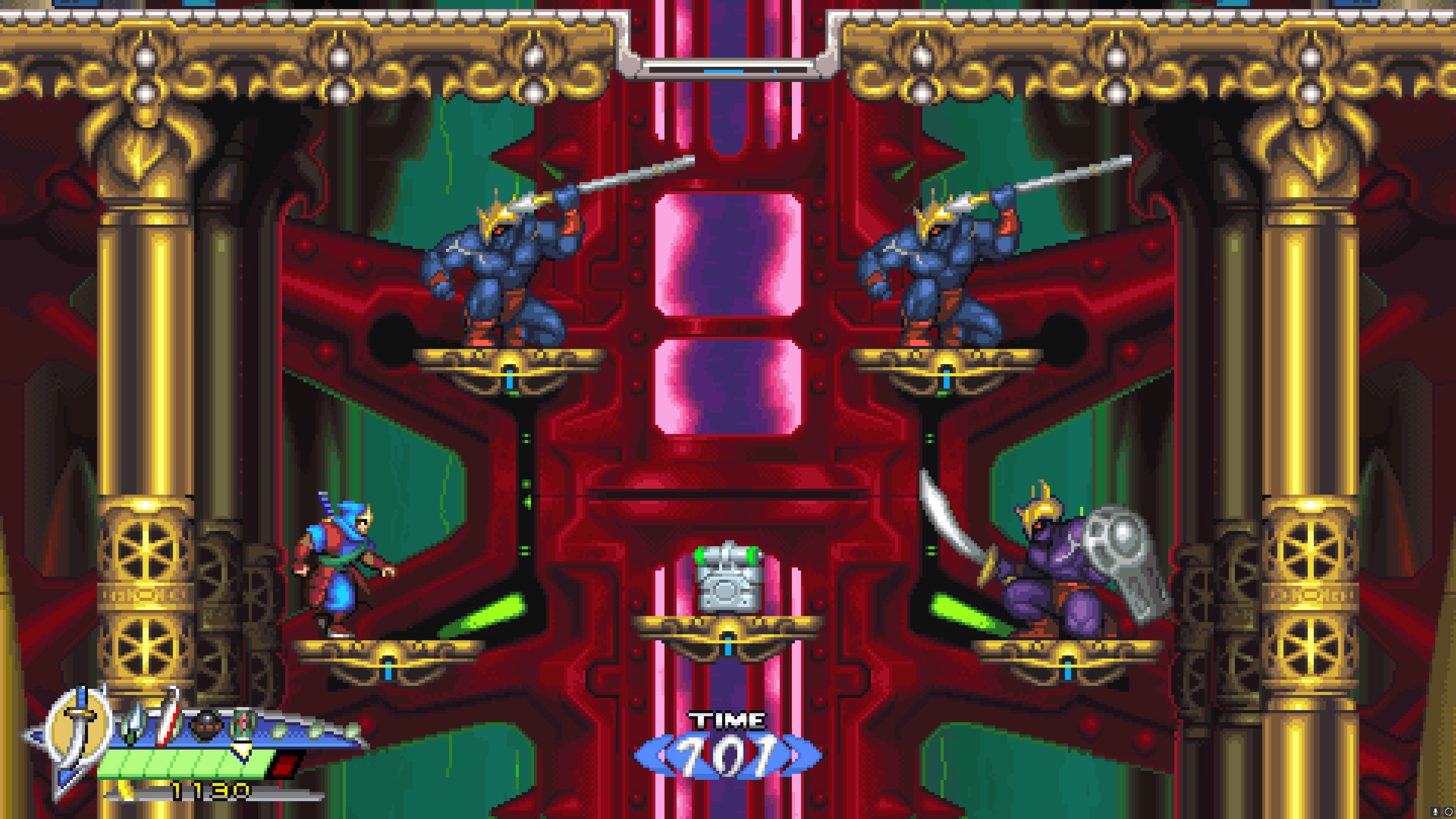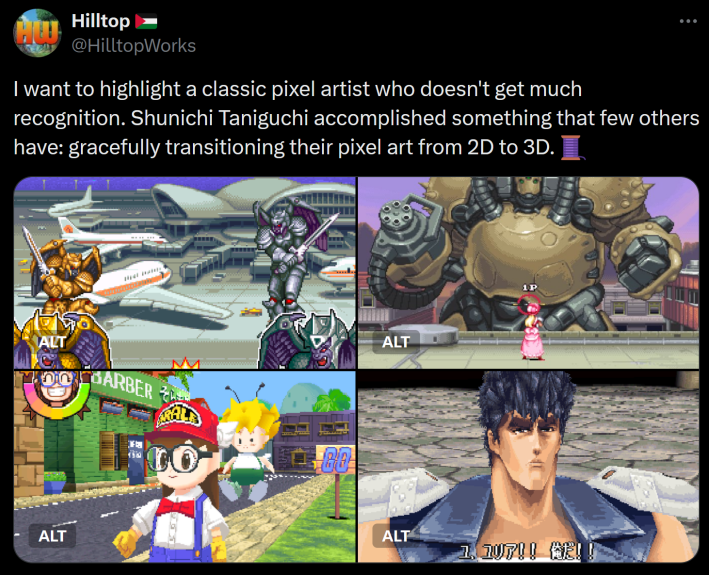Many people have directors they follow obsessively. When it comes to niche retro remakes, I follow Tengo Project. The three previous games that Tengo released – Wild Guns Reloaded, Ninja Saviors Return of the Warriors and Pocky and Rocky Reshrined – have all been on my game of the year list in their respective years. They are all brilliant, brutal but fair retro games that are remakes, at least on paper. The most recent, Shadow of The Ninja - Reborn is some of their best work, taking the idea of a remake and elevating it to an entirely new level. What Tengo Project does is singular and special, and I am so happy that they are allowed to flourish.
If you have not heard of Tengo Project, it’s because they are not terribly big or flashy. Tengo Project is a small development team of industry veterans inside Natsume Atari, basically three guys whose work goes back to the 90s. Their three previous titles were all remasters of games that they themselves had originally worked on in the Super Famicom era. Wild Guns Reloaded (a total remaster of the 1994 SNES game Wild Guns) was an arcade style steampunk cowboy game featuring redrawn pixel art, with two new characters and four-player co-op. The added characters, a beefy bomb-throwing woman named Doris and a dachshund named Bullet that is friends with a robot, are not only fun but add totally completely different ways to play the game. Tengo followed this up with the even more impressive The Ninja Saviors: Return of the Warriors, a total remake of a Super Famicom beat 'em up, itself a spinoff of a 1987 Taito arcade game. Tengo also remade the game from the ground up, adding two characters, one of which is a boss-sized character that takes up most of the screen. They followed this with Pocky and Rocky Reshrined a gut renovation of a beloved scrolling shooter where you play a shrine maiden and a tanuki.
The main people I know who are diehard fans of what Tengo does are often retro gaming fans like me. These people are either young and weird with niche obsessions, or 30 or 40 years old masochists who love spending an hour memorizing a platforming sequence. These are the kind of people who know Contra: Hard Corps inside and out. Every one of them either owns a MiSTer or has plans to in the near future. If you were forced to share a health bar in a co-op game, like you do in Shadow of the Ninja, you would trust them implicitly. They can recognize the fighting game levels of refinement and complexity that Tengo puts into their work. If “difficult but fair” describes your ideal game, then you are at home here.
Though Shadow of the Ninja - Reborn is an enhanced remake like Tengo’s previous games, it is their most radical and ambitious one to date. Part of this is due to how wildly different the source game is: the original Shadow of the Ninja (also known as The Dark Operative: Kage in Japan and Blue Shadow in Europe and Australia) was a fairly lean but difficult Famicom hack and slash platformer. Shadow of the Ninja - Reborn takes the original’s loose skeleton and transforms it into a Super Famicom era game. Calling this a remake undersells the sheer scale of what is being done here; this is functionally a new game. What Tengo have done is akin to remaking the original Megaman in the style and gameplay of Megaman X with an arranged soundtrack in 2024.

The setting and overall design of Shadow of The Ninja has been overhauled. The original was set in America in the year 2029, which they were going to have to change anyway given how the skyline of New York City has changed since 1991. Instead of the Big Apple, the setting is the megacity of Laurasia. As with the original, there is an evil emperor by the name of Garuda, and you play one of two ninjas, Hayate and Kaede, on a mission to restore peace. The revamped design of both the characters and setting is in keeping with the 16 bit cybernetic aesthetic of many of Tengo Project’s previous releases. The entire game looks like something I would think is cool when I was seven and try to draw on the margins of a notebook.
Though levels and enemies are similar to their NES counterparts, they have been so aggressively reworked as to make them almost entirely new. The katana and the whiplike kusarigama are now both permanent weapons instead of items that are switched out Castlevania style, and both have their own situational pros and cons. The item drop system itself has been expanded to include robust tools like flamethrowers and wall-climbing robots, and includes an inventory system that allows you to swap those items out on the fly. There is also a “pocket money” system that allows the player to fill up their inventory with items in time attack mode. The game also revamps how energy and the ninjutsu attack work in a way that dovetails into katana and health use.

On top of all that, movement has changed significantly. While the previous game emphasized hanging on platforms and overhangs, the remake adds completely new ways to move, like the ability to balance on the katana’s tsuba following a down attack, more directionality to the kusarigama, a Symphony of the Night style dash, wall running, and a brief mid-air spin that slightly extends the duration of a jump when performed. All of these are complex but marginal enough to not break the game, and many are required for getting to some of the game’s more complicated secrets and platforming segments. While many loyalists of the original may not like these changes, the truth is that simply updating the original would not have been particularly interesting, and what Tengo has done is made this game uniquely their own work.

What struck me the most while playing Shadow of the Ninja - Reborn is the art. Outside my favorite arcade game Osman (AKA Cannon Dancer), I have seen few games in the 16 bit style that look this lush and complex. This is made more impressive by the fact that the art is the work of one person, Shunichi Taniguchi. His ability to render gargantuan machines is second to none. The sheer complexity on display in this pixel art is mind-boggling, and speaks to someone who has been at this for ages (you may have also be familiar with his work on the Power Rangers fighting game, the iconic Shin Kidō Senki Gundam Wing: Endless Duel, and of course the original Shadow of the Ninja). This efficiency is extended to the whole team, given just how short the credits are compared to how beautiful and polished this game is. In addition to this, Iku Mizutani returned to perform the soundtrack himself.

This is what makes Tengo Project so singular. People online wring their hands constantly and throw trite little culture war fits about how “they don’t make ‘em like they used to”, but Tengo is not only doing that, it’s making them better. The games industry is brutal and unkind to the people who actually make the magic happen. Working conditions make people sick or injured or cause them to flee, seeking work with better pay and a healthier work-life balance. Skillsets are rendered niche or obsolete as technology advances. Game development is rarely a place to age with dignity, and to see people who made Super Famicom games continue to make Super Famicom games as though nothing had ever happened, with people who have decades-long relationships, makes me emotional in a way that I cannot articulate. That is a rare luxury. Perhaps I am being overly sentimental, but it is a miracle that Tengo Project is even allowed to do this, to go back and redo work, to refine their talents with age. They are out here, making games strictly for the freaks. I wish for so many others to get such an opportunity.

In a promotional mini documentary ININ Games made for the remake, Tanaguchi-san reflects. “It was 35 years ago since I was part of the original project, so I think it’s quite rare, even looking around the gaming industry, to be able to recreate a new game based on the game that I worked on in the past. In that sense, it may be a cliché, but persistence is power.”

Shadow of the Ninja - Reborn is available for PC, Switch, PS4/PS5 and Xbox.


